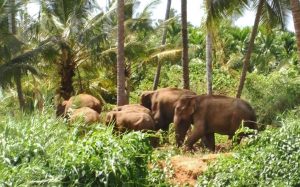Today Current Affairs: 16th August 2022 for UPSC IAS exams, State PSC exams, SSC CGL, State SSC, RRB, Railways, Banking Exam & IBPS, etc
Table of Contents
11 More Wetlands To The List Of Ramsar Sites:

India has added 11 more wetlands to the list of Ramsar sites to make total 75 Ramsar sites covering an area of 13 lakh 26 thousand 677 Hectare in the country in the 75th year of Independence.
- Ministry of Environment, Forests and Climate Change said, the 11 new sites include, four in Tamil Nadu, three in Odisha, two in Jammu and Kashmir and one each in Madhya Pradesh and Maharashtra.
- India is one of the Contracting Parties to Ramsar Convention, signed in Ramsar, Iran in 1971.
- India signed it on 1st February 1982. During 1982 to 2013, a total of 26 sites were added to the list of Ramsar sites, however, during 2014 to 2022, the country has added 49 new wetlands to the list of Ramsar sites.
- Tamil Nadu has maximum number of Ramsar sites which is 14, followed by Uttar Pradesh which has 10 numbers of Ramsar sites.
Ayush Grid Project:

An MoU was signed between Ministry of Ayush and Ministry of Electronics and Information Technology (MeitY) for providing technical support to Ministry of Ayush for digitalisation of Ayush Sector under the Ayush Grid project for a period of 3 years.
Highlights of the MoU include;
- This MoU is continuation of a MoU that was inked in 2019.
- Both the ministries will continue to work in together.
- MeitY will provide technical support, including adoption of emerging technologies, for the Ayush Grid project.
About Ayush Grid project:
- Ayush Grid Project was launched by Ministry of Ayush in 2018 to create a backbone for IT sector.
- Project was launched under Digital India Program that support ‘Information and Technology’ in transforming operational efficiency, enhancing service quality and improving delivery of service.
- It will allow integration of all stakeholders and services or functions related to Ayush systems of health care.
- The project seeks to bring all onboard all the facilities of AYUSH (Ayurveda, Yoga and Naturopathy, Unani, Siddha and Homoeopathy), including laboratories and hospitals besides promoting traditional healthcare systems.
Agasthyamalai Elephant Reserve : India’s 31 Elephant Reserve

The central government has notified Agasthyamalai Elephant Reserve (Kanyakumari and Tirunelveli, TN) as India’s 31 elephant reserve
- This will be the 5th elephant reserve in the state.
- The forest department may be eligible for additional financing through the centrally sponsored Project Elephant after notifying the Agasthiyarmalai Elephant Reserve.
- It will help connect the populations to other areas in the Srivilliputhur Meghamalai tiger reserve and with the Periyar landscapes.
About Agasthyamalai Biosphere Reserve (ABR):
- ABR is situated at the southern-most end of the Western Ghats and spread over two southern states Kerala and Tamil Nadu.
- It is named after the Agastya Mala peak that rises up to almost 1868 metres above sea level, in Thiruvananthapuram, Kerala.
- In March 2016, it was included in the World Network of Biosphere Reserves of UNESCO.
- It covers Peppara and Shendurney wildlife sanctuaries and parts of the Neyyar sanctuary in Kerala and the Kalakad Mundanthurai Tiger Reserve of Tamil Nadu.
- It is home to the Kanikaran tribe, one of the oldest surviving ancient tribes in the world.
The Nature Index 2022:

The Nature Index 2022 was recently released. Survey for the index was conducted based on research articles published in chemistry, life sciences, physical sciences and earth & environment. Rankings were provided on the basis of information secured during April 1, 2021, to march 31, 2022.
Highlights of Nature Index 2022:
- In the index, University of Hyderabad has secured first position among Indian Universities while has been placed at 16th position among all institutions in academic sector.
- Hyderabad was ranked first with 72 research papers and a share of 19.46 in academic sector.
- Rank 23rd– Indian Institute of Technology (IIT) Hyderabad.
- Rank 26th– Indian Institute of Science Education and Research (IISER), Tirupati.
- Rank 54th-Amity University.
Nano Urea:

India will produce over 6cr bottles of Nano urea and make it available to farmers in 2022-23.
- Urea is chemical nitrogen fertilizer, white in colour, which artificially provides nitrogen, a major nutrient required by plants.
- Liquid nano urea is essentially urea in the form of a nanoparticle.
- It is a patented chemical nitrogen fertilizer produced by IFFCO.
- Nano urea is cheaper (Rs 240 for half litre without subsidy; the International market price of a bag of urea is between Rs 3,500 and Rs 4,000. A bottle of nano urea can effectively replace at least one bag of urea.
- Benefits for the government: Reduces fertilizer subsidy bill of government. India is dependent on imports of the widely used fertilizer.
- The efficiency of Nano urea can be as high as 85-90 per cent (Conventional urea has an efficiency of about 25 per cent).
- As Nano urea has higher surface-mass ratios that help in releasing nutrients to plants in a controlled manner.
- Nano urea has a shelf life of a year, and farmers need not be worried about “caking” when it comes in contact with moisture.
Benefits Of Nano urea:
- Fertilizers in nano form provide a targeted supply of nutrients to crops, as they are absorbed by the stomata, and pores found on the epidermis of leaves.
- Reduces the unbalanced and indiscriminate use of conventional urea.
- Increases crop productivity by 8%
- Reduces soil, water, and air pollution.
DigiYatra:

The Delhi International Airport Ltd (DIAL), run by GMR, announced the soft launch of the Centre’s DigiYatra initiative, rolling out the beta version of its app for Android platforms.
- The ‘DigiYatra’ is a Biometric Enabled Seamless Travel experience (BEST) based on Facial Recognition Technology.
- It aims to provide a paperless and seamless travel experience to the passengers.
- “DigiYatra is a unique initiative of the Government of India, coordinated by the Ministry of Civil Aviation.
- DigiYatra envisages that travellers pass through various checkpoints at the airport through paperless and contactless processing, using facial features to establish their identity, which would be linked to the boarding pass.
- The DigiYatra Foundation will be the custodian of the passenger ID validation process.
- It will also define the criteria for compliance and guidelines for the local airport systems.




